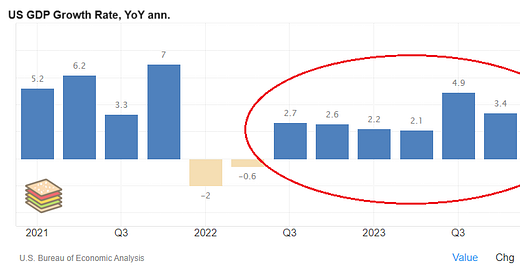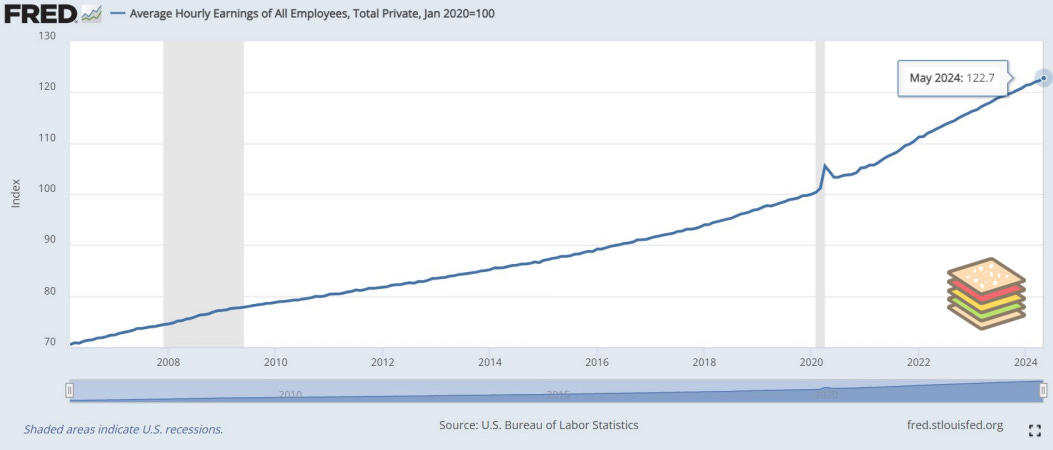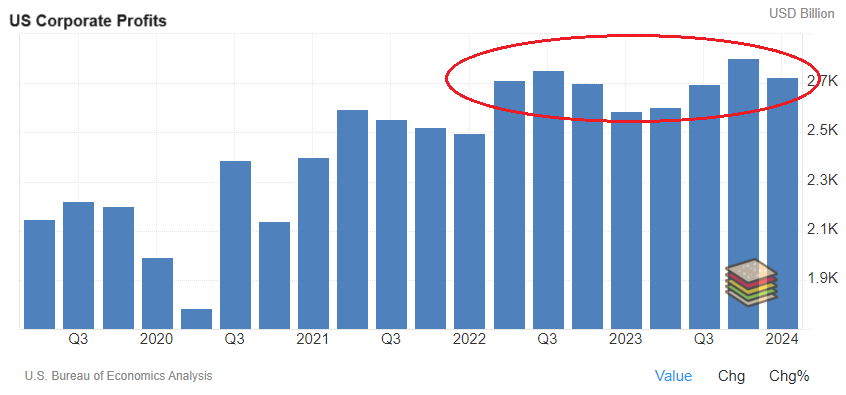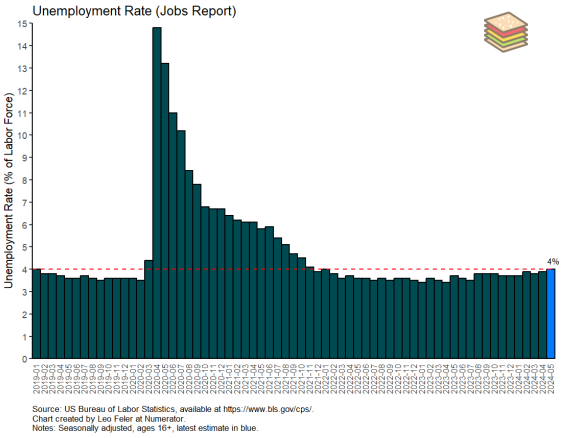Welcome back Traders,
In our last post we discussed how to decode the market context using macro/fundamentals and technicals. Today we discuss the current market context that we’ve been using to call the bull market. From “How I Make Money by Trading with Context”:
For the next year and a half, the market took off and didn't look back. Even the banking crisis in March 2023 couldn’t stop this rocket. And barring a few seasonal pullbacks, the market "rode" the moving averages to prior highs, then to new all-time highs. This was the golden moment; a new bull market had begun. Anyone still stuck in recession mode (like many economists out there) was now against the context.
Macro: Inflation cooling, interest rates falling, Fed pivot, earnings recovery, GDP resumes growth (bullish)
Technicals: Strong upward trend, more breadth thrusts, cyclical stocks start to outperform, bullish options activity (bullish)
Positions: buying stocks with both fists; we're in a new bull market!!!
Most of those points continue to hold true today. The US economy is resilient, with consumers and corporations still going strong, thanks in part to the lingering effects of fiscal stimulus. Inflation is falling, which should spur the Fed to cut interest rates soon. The technicals are aligned in confirming a bull market. So let’s dive into each of these pieces individually.
The recession is NOT happening
I can’t overstate how many smart, informed pundits (many of whom are well-paid economists at large banks) are still wrong about the recession call. The US economy is resilient, period full stop.
Consumers are: 1) employed; 2) seeing wages rise in nominal terms; 3) have locked in low mortgage rates for the next 30 years; 4) household debt levels are low; and 5) they’re spending, spending, spending even as savings rates dwindle.
Meanwhile, corporations are: 1) still benefiting from price increases which boosted margins; 2) paid down debt using cash flow from the post-Covid years; 3) termed out debt with low interest rates; 4) earning high interest rates on large cash piles; 5) benefiting from high levels of consumer spending; and 6) seeing new productivity gains from Gen AI.
None of these things point to recession. Sure, interest rates are restrictive, but with debt levels low and termed out, no one is feeling pain from higher interest rates. Manufacturing and services activities are chugging right along.
How did economists get it so wrong?
Without bashing anyone, there’s a few common themes that I have observed. Firstly, this economic cycle has been unusual, with an asynchronous slowdown across sectors. Manufacturing was hit first, then tech, then later shipping and commodities while services remained well supported (uncommon in downturns). This has to do with the unevenness of the post-Covid reopening.
Secondly, economists are using outdated models. Not only do these fail to capture the nuances of this cycle, they are over-reliant on yield curve signals. The argument goes, every yield curve inversion (i.e. long-term interest rates are below short-term rates) has portended a recession. But this ignores the fact that the economy is less sensitive to interest rates nowadays, and there is Fed activity artificially suppressing the curve.
So keep this in mind the next time you hear someone calling for an imminent recession. Perhaps a more appropriate framework is one of the following (I’ll elaborate more in a future post):
K-shaped recession
Rolling recession
Inflationary recession
Recession already happened
Jobs picture is clear as mud
Through Covid, many workers were lost due to deaths, retirement, and a lack of immigration, causing widespread labor shortages. Companies see how hard it is to hire people and therefore they are not letting people go. The result is rising wages and low unemployment. Recessions simply don’t happen when everyone is working and wages are rising!
But as citizens returned to the labor force and immigration resumed, job openings got filled and the labor market has started to loosen. That doesn't mean a collapse - just a return to pre-Covid levels. Eventually we will reach a tipping point where unemployment has no choice but to increase:
Sidebar: Household survey and payrolls are two different measures of employment and lately they have diverged, causing some to wonder if the recession is nigh. But there’s a flaw in how the former is calculated due to immigration. When we verify against initial claims, hours worked, and wages, we can see that jobs are still fine for the most part. Moving right along…
Interest rates and inflation
Inflation has been sticky and some think it will spike up again. They point to things like rising commodity prices, shipping prices, reshoring, tariffs, lack of labor, AI investment, fiscal deficits… the list goes on. The fact of the matter is current inflation is mostly attributed to car insurance and shelter, both of which are notoriously laggy but trending in the right direction. The market is coming to terms with inflation, and that's supportive for risk assets.
Interest rates should therefore follow inflation lower as uncertainty clears. This is confirmed by falling bond volatility (MOVE index) and inflation expectations remaining anchored. The Fed is close to cutting, while the US Treasury appears to be wary of a UK-style bond crisis so they too have capped rates. These things suggest interest rates stay rangebound or lower in the medium term.
Note that equity correlations to interest rates have declined dramatically since 2022, meaning the market is not worried about interest rates and neither should you.
The Fed
So far, the Fed has paused hiking but they’ve repeatedly pushed back the timing of cuts. But how soon/fast they cut is irrelevant from an equity market standpoint. As long as they don’t suddenly decide to hike again, the market will view anything they do (even higher for longer) as dovish - thus pushing stocks higher.
Speaking of the Fed, I want to reference a concept called liquidity. This is inspired by
over at Capital Wars (give him a follow!). Put simply, liquidity measures the money sloshing around the system, which has a tendency to find its way into risky assets (stocks, Nasdaq, crypto). The Fed and other central bankers play a big role in controlling liquidity. Since the lows in Oct 2022, global liquidity has been rising and is a big reason the market has been soaring.Why would central bankers want that? Quite simply, they need to protect the financial system. They do this by providing emergency lending lines and easing financial conditions, which are forms of liquidity.
Another thing that markets missed from Powell is that since the May FOMC meeting, the Fed’s priority has shifted from taming inflation to protecting jobs. He is telling us that he will err on the side of stimulus when it comes to managing the economy from here on out. Don't fight the Fed - the old adage has never been more relevant than now.
If you go back a couple of years, our framework document says that, when you look at the two mandate goals, if one of them is further away from goal than the other, then you focus on that one… and that was clearly inflation. As inflation has come down, now to below 3% on a 12-month basis, we’re now focusing on the other goal. The employment goal now comes back into focus.
-Powell at May 1st FOMC
Corporate earnings
The last piece of context is corporate earnings. After all, stock prices go up when earnings go up. And earnings are quite healthy! We said earlier that margins are still high from price increases, people are still spending, and revenues are growing. Add to that the efficiency gains from Gen AI and the lingering benefits of fiscal spending, and you have a potent mix for sustained earnings growth.
In fact, in the upcoming quarter, 10 out of 11 sectors are expected to see revenue growth while 8 out of 11 sectors are expected to see earnings growth. The bears will argue that consensus is too high at 8.8% but in my opinion, anything above 5% is likely to support the growth narrative. Moreover, margins are set to expand.
To be continued…
That’s all for the fundamentals/macro portion! This post is getting a bit long so we’ll call it a wrap. In the next post I’ll detail the techncials portion of the market context. Stay tuned.
If you enjoyed this post, give us a like and a follow!
Twitter/X: @mktcontext
Disclaimer: This publication is for educational purposes only. The authors are not investment advisors and nothing here is investment advice. Always do your own due diligence.










